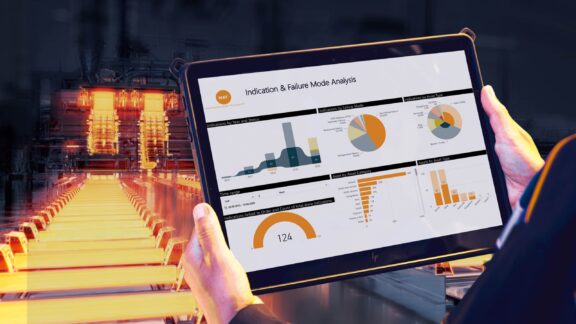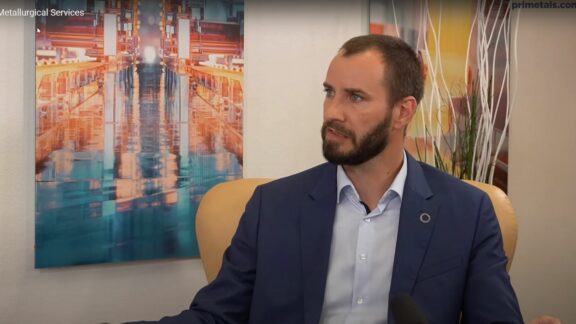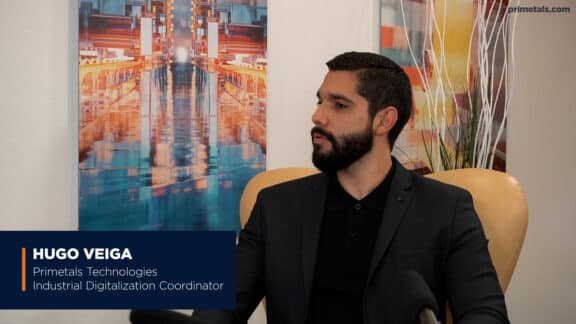Maintenance is a fact of life when running a steel plant, but a common misconception is that maintenance is merely a cost factor negatively impacting the bottom line. At Primetals Technologies, we view reliability-centered maintenance as improving, optimizing, streamlining production, and preventing potential stoppages and slowdowns. We view maintenance as an advantage.
Reliability-centered maintenance aims to improve the performance of the assets in production and secure the organization’s knowledge regarding these valuable assets to ensure that maintenance occurs on time and efficiently. By combining conventional maintenance practices with results and comparing data, producers can quickly determine what is beneficial and will save time later. In summary, combining reliability-centered maintenance with plant data and preserving the knowledge regarding these activities can lead to immense savings, including spare parts, labor, and reduced production stoppages.
What is maintenance?
Maintenance for a steel plant means condition monitoring technologies, manual inspections, spare parts, labor, and repairs. Maintenance also translates to downtime, i.e., taking operations and production offline to maintain or repair assets to ensure they are back online and operating at total capacity. In an ideal world, heavy industry technologies would develop to a point where maintenance would be manageable, predictable, and stick to a schedule. Unfortunately, maintenance technologies and production technologies have not come far enough never to need maintenance or be able to predict maintenance in a schedulable fashion.
The reality of maintenance is using condition monitoring technologies and inspections to plan downtime, labor, and repair, as well as spare part orders to ensure that plants go offline briefly so production can ramp back up to total capacity. However, where many producers see maintenance as a cost factor, services from Primetals Technologies see maintenance as an opportunity. It is an opportunity to bring assets back online and operate more efficiently than before, implement part management platforms to be aware of future maintenance needs, and establish a long-term partner for future maintenance successes.
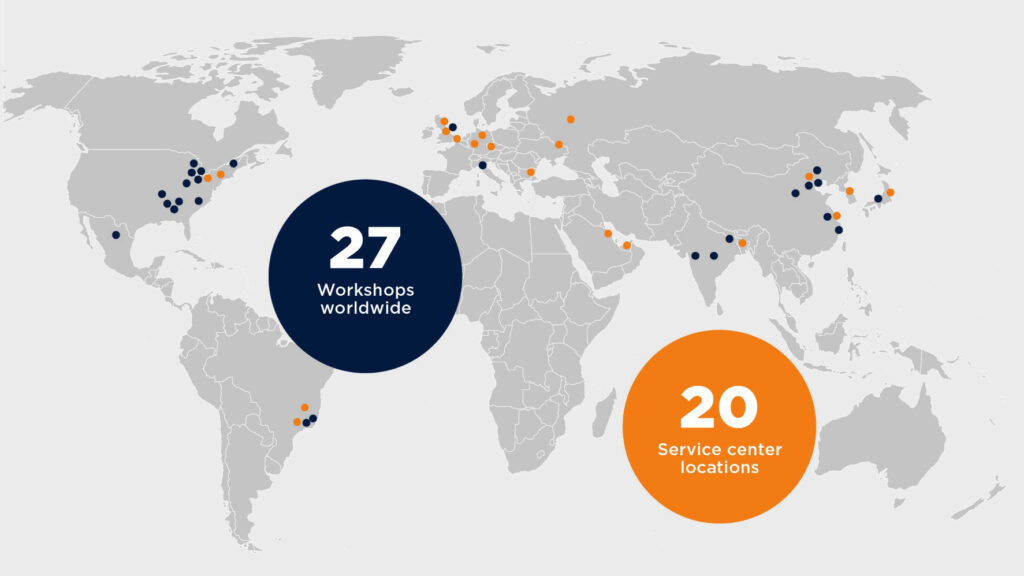
From Reliability to Advantage
Reliability is crucial in transforming maintenance from a cost factor to an advantage. Reliability-centered maintenance is a systematic approach to maintenance developed by teams at Primetals Technologies and based on four pillars of maintenance—i.e., equipment reliability performance monitoring, equipment failure elimination, risk mitigation strategy, and equipment reliability strategy review. These pillars make up the core of a reliability-centered approach to maintenance.
Each aspect of reliability-centered maintenance seeks to bring components back online as quickly as possible and to record actions and activities to keep assets operational. The first pillar focuses on monitoring and reporting, looking specifically at the impact and frequency of losses and maintenance interventions based on data from, e.g., control systems, work order histories, and maintenance cost in the computed maintenance management system. Maintenance interventions also include daily monitoring and monthly reporting. In summary, this pillar looks at a specific component for improvement capabilities based on tracking and monitoring data.
In an ideal world, component failure could be mitigated in all cases. However, the second pillar works with the reality that equipment failure is a fact of life. Equipment failure elimination is based on a systematic process for identifying the cause of the failure through root-cause failure analysis in three phases—i.e., collection, analysis, and solution. These activities should be executed regularly to eliminate failures before they occur.
The third pillar, the risk mitigation strategy, is closely tied to failure elimination. This portion of reliability-centered maintenance is key to delaying and preventing asset failure entirely. Asset criticality analysis identifies critical equipment at the system level. Mitigation strategies, including maintenance tasks, are applied through a failure mode, effect, and criticality analysis on the most critical assets. This pillar is an active part of maintenance. When new equipment is installed, modifications to equipment occur, assets receive necessary upgrades, and when legislation changes, company standards, or business goals necessitate changes to assets.
Finally, the equipment reliability strategy review is the final pillar that assesses maintenance itself for effectiveness. Quantitative assessment examines whether the investment into maintenance has “paid off” in terms of failure mitigation and return on investment. Based on these reviews and preventative maintenance activities, a further fine-tuning of the reliability strategy can happen regularly throughout the maintenance lifecycle. These lifecycles extend over years, ideally with a trustworthy partner.
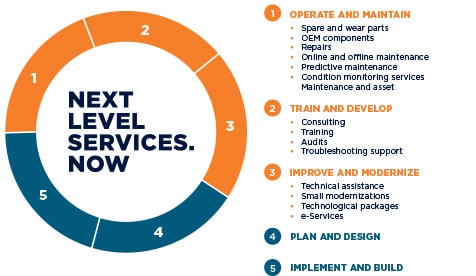
Reliability-Centered Practice
Reliability-centered maintenance and digital software can deliver valuable information on demand, analyze events and actions, document them in the system, and send updates to engineering, supply chain management, and technology departments. Implementing reliability-centered maintenance at the beginning of an asset lifecycle ensures that it will be monitored to reduce the risk of failure and ensure that optimal preventative measures are taken.
In practice, reliability-centered maintenance tracks the performance of a component and the possibility of improvement—i.e., pillar one, reliability performance monitoring and root-cause failure analysis through connected services from Primetals Technologies; pillar two, equipment-failure elimination using augmented reality glasses and troubleshooting documentation; pillar three, the creation of a risk mitigation strategy with experts at Primetals Technologies supporting the asset benchmarking. The documentation is then easily shared across multiple organizations, including engineering, maintenance workshops, and R&D.
While these factors are underway, a condition monitoring unit is delivered to the plant with detailed instructions. “E-Learnings” are shared with local maintenance teams to improve monitoring practices—pillar one. Experts then visit the plant to assess online and offline maintenance practices, combining their findings with the results of condition monitoring for recommended preventative maintenance practices—pillar three. In conclusion, the results of all of these activities become part of a report to create knowledge for the producer and Primetals Technologies to review the impact of these activities over time—pillar four is equipment reliability strategy review. Ideally, the review of these activities then produces a reliable preventative maintenance routine to see continuous improvement of the asset.
Maintaining Partnerships
Maintenance teams working at plants seek to determine the root cause of failures of specific assets and benefit from working with our approach via an international and global network of maintenance experts and workshops. Maintenance partnerships with Primetals Technologies are based on service contracts that customers have entered into for decades to maintain their plants and assets. What is key is the philosophy that when placing quick orders or outsourcing full-on maintenance projects, our experts gain insight into the day-to-day operations of our customers. Over time, this fosters an approach that emphasizes keeping a plant running in collaboration.
A so-called “fifth pillar” of reliability-centered maintenance is the partnership between Primetals Technologies’ services experts and maintenance teams at steel producers. We share our approach and technologies to advance maintenance practices, encouraging and enhancing preventative maintenance for optimal returns and reduced downtimes.
True to our approach, the workshops and assets of Primetals Technologies are also maintained by in-house teams using our digital maintenance solutions. In-house use of our technologies translates into every innovation, including spare-part management, inventory tracking, knowledge management, and performance management, driven by the needs of our customers and our internal maintenance practices. The advantage of well-maintained assets is that they are advantageous for both Primetals Technologies and partnering steel producers. Our technologies and expertise are helping every maintenance team worldwide to ensure that labor, parts, and shutdowns are executed optimally, saving time and resources and turning maintenance into an advantage.
Learn more about digital maintenance from Primetals Technologies.
